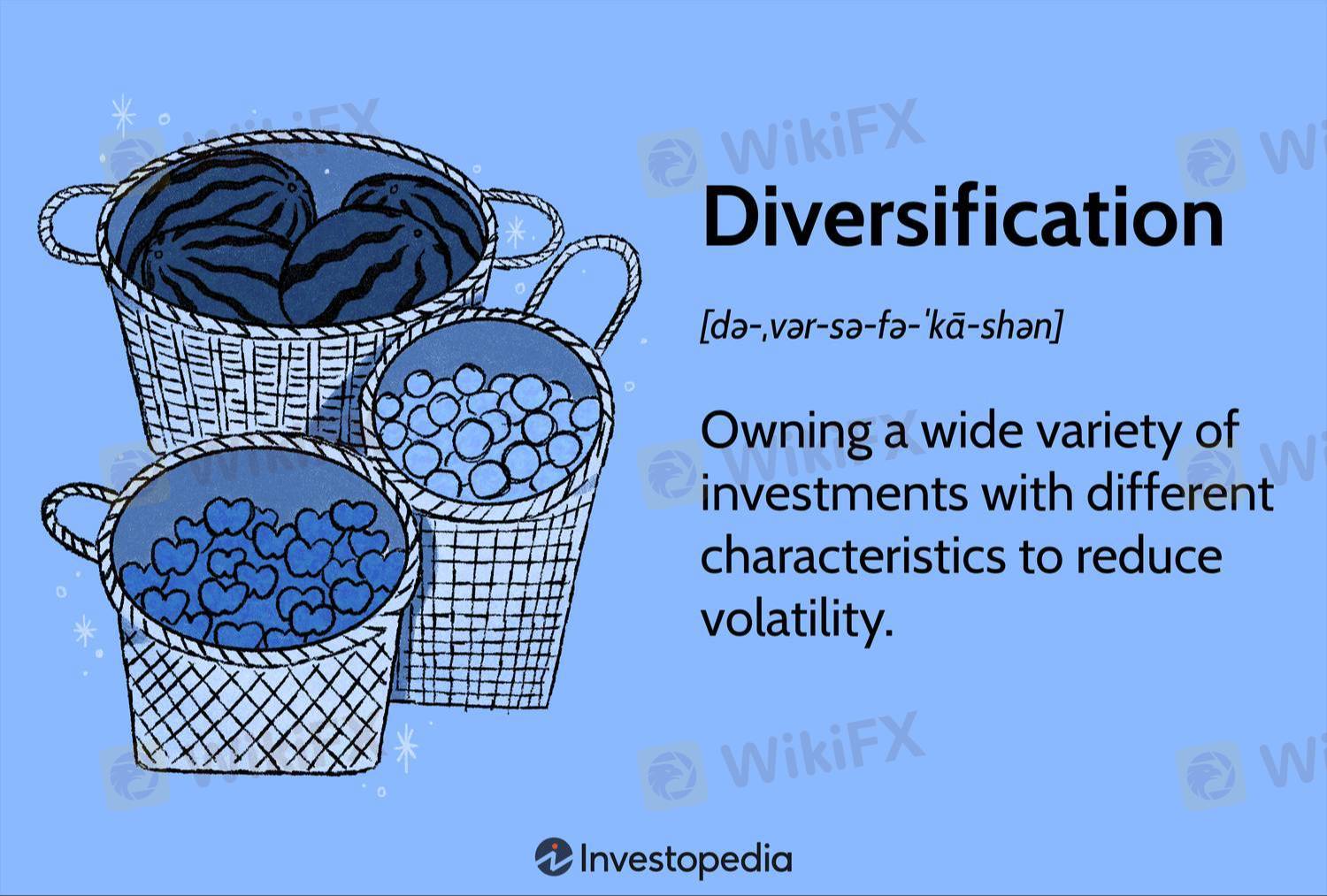
2025-02-18 01:11
NgànhThe role of diversification in risk management.
#forexrisktip
Diversification is a risk management strategy that mixes a wide variety of investments within a portfolio. The rationale behind diversification is that a diversified portfolio will yield higher returns and pose a lower risk than individual securities or homogeneous portfolios. A diversified portfolio should include different asset classes, such as stocks, bonds, and real estate, as well as different sectors, such as technology, healthcare, and energy. It should also include investments in different countries and regions.
Diversification is important because it helps to reduce the risk of loss. If one investment performs poorly, the other investments in the portfolio can help to offset the losses. This is because different asset classes, sectors, and countries tend to perform differently over time. For example, stocks may perform well when the economy is strong, while bonds may perform well when the economy is weak.
Diversification can also help to improve returns. By investing in a variety of assets, investors can increase their chances of capturing the gains from different markets. For example, if the stock market is performing well, the portfolio will benefit from the gains in the stock market. If the bond market is performing well, the portfolio will benefit from the gains in the bond market.
However, diversification does not guarantee a profit or eliminate the risk of loss. It is still possible to lose money in a diversified portfolio. However, the risk of loss is lower than it would be if the portfolio was not diversified.
Here are some of the benefits of diversification:
* Reduces the risk of loss
* Improves returns
* Helps to achieve long-term financial goals
* Reduces volatility
* Provides peace of mind
Here are some of the risks of diversification:
* Can be complex and time-consuming
* May not be suitable for all investors
* Does not guarantee a profit or eliminate the risk of loss
Overall, diversification is a valuable risk management strategy that can help investors to achieve their financial goals. However, it is important to understand the risks and benefits of diversification before making any investment decisions.
Thích 0
Cry63
Nhà đầu tư
Bình luận phổ biến
Ngành
Có cao quá k?
Ngành
Xin ý kiến liberforex
Ngành
Đầu tư CDG
Ngành
Cắt lỗ
Ngành
Có nên chốt lỗ?
Ngành
Hỏi về dòng tiền
Phân loại diễn đàn

Nền tảng

Triển lãm

IB

Tuyển dụng

EA

Ngành

Chỉ số thị trường

Chỉ số
The role of diversification in risk management.
 Ấn Độ | 2025-02-18 01:11
Ấn Độ | 2025-02-18 01:11#forexrisktip
Diversification is a risk management strategy that mixes a wide variety of investments within a portfolio. The rationale behind diversification is that a diversified portfolio will yield higher returns and pose a lower risk than individual securities or homogeneous portfolios. A diversified portfolio should include different asset classes, such as stocks, bonds, and real estate, as well as different sectors, such as technology, healthcare, and energy. It should also include investments in different countries and regions.
Diversification is important because it helps to reduce the risk of loss. If one investment performs poorly, the other investments in the portfolio can help to offset the losses. This is because different asset classes, sectors, and countries tend to perform differently over time. For example, stocks may perform well when the economy is strong, while bonds may perform well when the economy is weak.
Diversification can also help to improve returns. By investing in a variety of assets, investors can increase their chances of capturing the gains from different markets. For example, if the stock market is performing well, the portfolio will benefit from the gains in the stock market. If the bond market is performing well, the portfolio will benefit from the gains in the bond market.
However, diversification does not guarantee a profit or eliminate the risk of loss. It is still possible to lose money in a diversified portfolio. However, the risk of loss is lower than it would be if the portfolio was not diversified.
Here are some of the benefits of diversification:
* Reduces the risk of loss
* Improves returns
* Helps to achieve long-term financial goals
* Reduces volatility
* Provides peace of mind
Here are some of the risks of diversification:
* Can be complex and time-consuming
* May not be suitable for all investors
* Does not guarantee a profit or eliminate the risk of loss
Overall, diversification is a valuable risk management strategy that can help investors to achieve their financial goals. However, it is important to understand the risks and benefits of diversification before making any investment decisions.
Thích 0
Tôi cũng muốn bình luận.
Đặt câu hỏi
0bình luận

Chưa có người bình luận, hãy là người bình luận đầu tiên

Đặt câu hỏi
Chưa có người bình luận, hãy là người bình luận đầu tiên